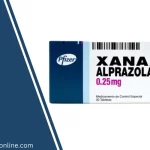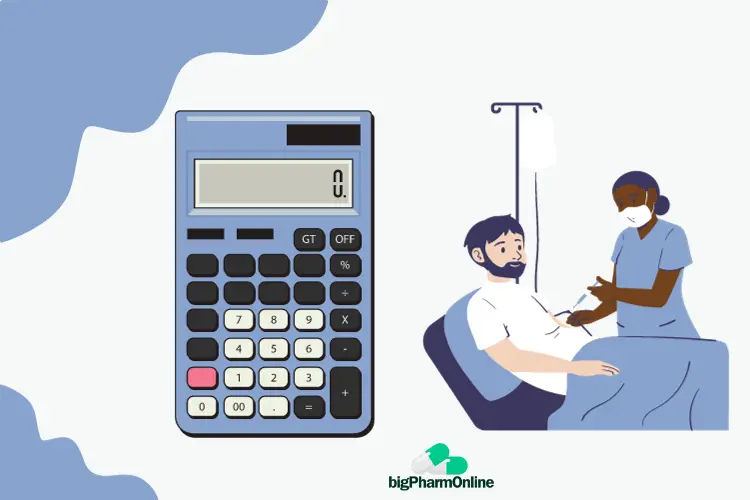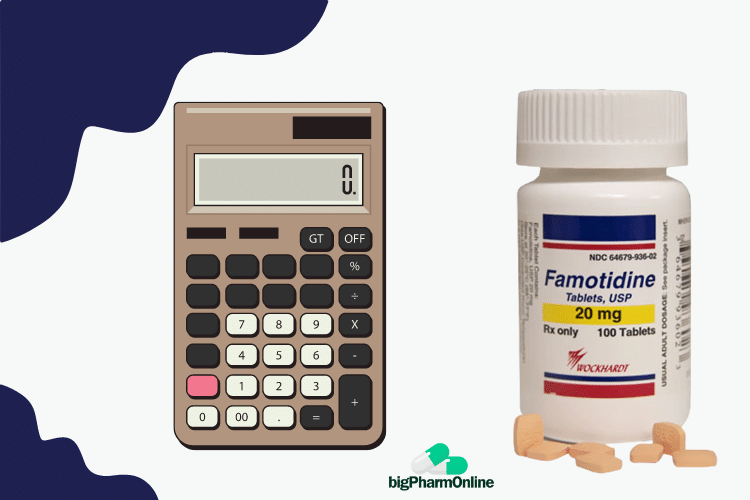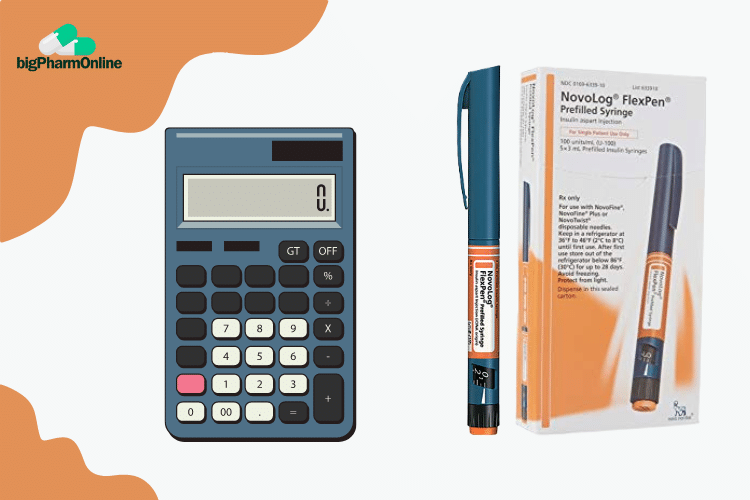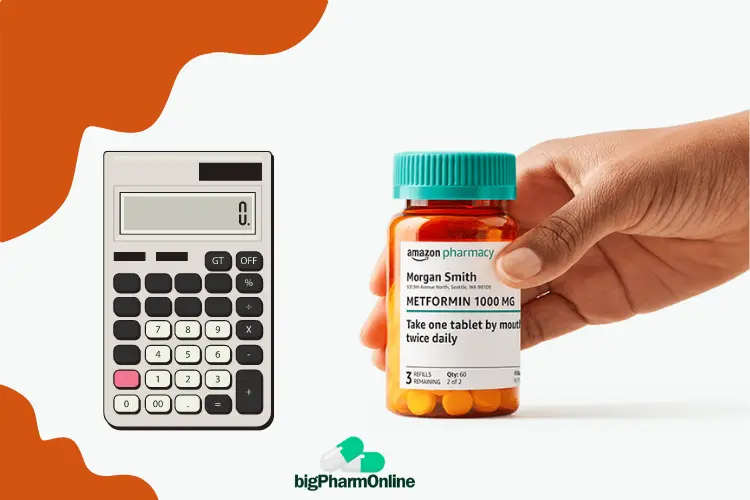Ibuprofen Pediatric Dosage Calculator
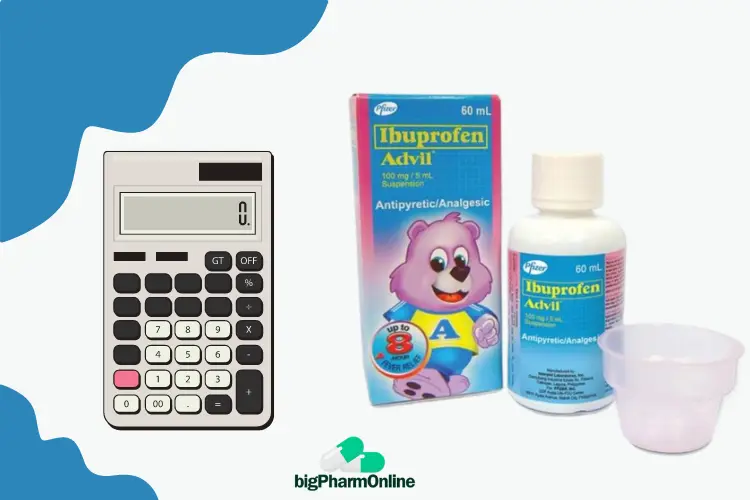
This Ibuprofen pediatric dosage calculator will help you calculate the recommended dosage range for children. All you need to do is input the required details and watch the magic happen.
In this post, you will also have access to the ibuprofen dosage chart, instructions on when to give, when not to give, and how to give Ibuprofen to a child.
How to Use Ibuprofen Pediatric Dosing Calculator
- Enter the Age of the child and select the applicable unit either months or years. The calculator is specifically for children above the age of 6 months.
- Enter the Weight of the child in either pounds (lbs) or kilograms (kg) and select the applicable unit.
- Select the Indication for which the drug is to be taken.
- Click the Calculate dose button for the recommended dose based on your provided information to be calculated.
- Read the article to find out the dose ranges used in this calculator and also other vital information.
Ibuprofen Pediatric Dosage Calculator
IMPORTANT: Please note that this calculator is strictly for information purpose only. It should NOT be considered as a substitute for any professional medical service, NOR as a substitute for clinical judgement.
About Our Ibuprofen Pediatric Dosage Calculator
Bigpharmonline’s Ibuprofen Pediatric Dosage Calculator is a tool programmed with a set of recommended dose ranges for specific conditions in children.
The tool is only meant for children who are 6 months old and above. For doses in children below 6 months, consult your doctor about it.
But generally, the safety and efficacy of Ibuprofen have not been established in children below the age of 6 months.
This tool calculates doses for 3 basic indications of Ibuprofen in children. These are:
- Fever
- Pains
- Juvenile Idiopathic Arthritis
The dosing rule used by the calculator to calculate doses for each indication is as follows. For:
- Fever: 5 – 10 mg/kg/dose orally every 6- 8 hours; not to exceed the maximum single dose of 400 mg or the maximum daily dose of 40 mg/kg/day (1200 mg max).
- Pains: 4 – 10 mg/kg/dose orally every 6- 8 hours; not to exceed the maximum single dose of 400 mg or the maximum daily dose of 40 mg/kg/day (1200 mg max).
- Juvenile Idiopathic Arthritis: 30 – 50 mg/kg/24hr orally divided every 8 hours; not to exceed a maximum daily dose of 2.4 g.
This calculator takes only Ibuprofen oral suspension into consideration. It allows you to choose from two commonly available strengths of Ibuprofen which are
- Ibuprofen Oral Suspension 100 mg/ 5ml
- Ibuprofen Oral Suspension 200 mg/ 5ml
The calculator displays the calculated recommended dose as a range in both Milliliters and Milligrams.
The Maximum Single Dose of Ibuprofen
The Maximum Single Dose refers to the maximum quantity of Ibuprofen you can give to a child at a single time.
So, if you were to give your child the drug three times a day. It means that you are not to give beyond 400mg at any of those three times.
In the case of 100 mg / 5 ml suspension, the maximum single dose is 20 ml. While that of the 200 mg / 5 ml suspension is 10 ml.
The Maximum Daily Dose of Ibuprofen
The Maximum Daily Dose refers to the total amount of Ibuprofen you can give to your child in one day or 24 hours.
For example, if your child weighs 30kg, using the maximum dose of 40 mg/kg/day, your child’s daily maximum dose would be 1200 mg.
This 1200 mg can be divided and given 3 times a day (i.e. 400 mg three times in a day).
The maximum daily dose for the 100 mg / 5 ml suspension is 60 mL. While that of a 200 mg / 5 mL Suspension is 30 mL.
Overview of Ibuprofen
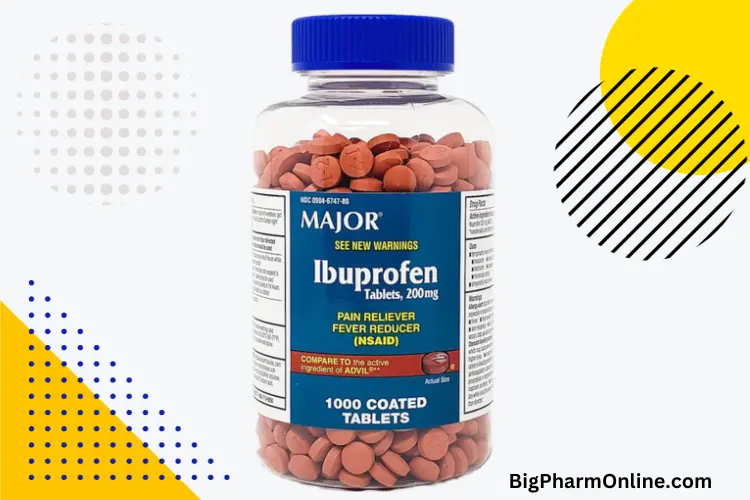
Ibuprofen is a popular over-the-counter medication used to provide symptomatic relief for pains, fever, and inflammation.
It belongs to the Non-Steroidal Anti-inflammatory Drugs (NSAIDs) class. Drugs in this class produce their effects by blocking a certain enzyme in the body from producing a chemical called prostaglandin.
Prostaglandin is known to cause pain, fever, and inflammation. So by blocking its production, these effects can be abolished.
This of course comes with its own disadvantage because apart from the listed undesirable effects, prostaglandin also protects the lining of the stomach by blocking the production of gastric acid which in turn prevents the degradation of the stomach lining [1].
This outcome alongside other effects like stomach pain, heartburn, nausea, vomiting, gas, constipation, or diarrhea, rash, itching, or hive, headache, dizziness, or drowsiness, bleeding, bruising, or anemia, constitutes the common side effects of Ibuprofen.
Pediatric Ibuprofen Oral Dosing Chart
It is highly recommended that the dosing of Ibuprofen be done based on body weight rather than on age. The recommended dose range is 4 – 10 mg/kg/dose and given orally every 6 to 8 hours.
But where the use of body weights is not attainable, dosing by age can be done.
However, the maximum single dose of 400 mg/dose and the maximum daily dose of 40 mg/kg/day must be maintained.
Below is a table showing the dosages of Ibuprofen in Children as provided by the American Academy of Pediatrics Council on Quality Improvement and Patient Safety [2].
| Weight | Age | Infants’ Ibuprofen Drops 50 mg/1.25 mL | Children’s Liquid Ibuprofen 100 mg/5mL | Children’s Ibuprofen chewable tablet 50mg | Adult’s Ibuprofen Tablets 200 mg |
|---|---|---|---|---|---|
| 2.7-4.9 kg (6-11 lbs) | 0-5 months | Consult a doctor | – | – | – |
| 6-7.7 kg (12-17 lbs) | 6-11 months | 1.25 mL | 2.5 mL | – | – |
| 8-10.4 kg (18-23 lbs) | 12-23 months | 1.875 mL | 4 mL | – | – |
| 10.5-15.8 kg (24-35 lbs) | 2-3 years | 2.5 ml | 5 ml | 2 tablets | – |
| 15.9-21.3 kg (36-47 lbs) | 4-5 years | 3.75 mL | 7.5 ml | 3 tablets | – |
| 22-26 kg (48-59 lbs) | 6-8 years | 5 ml | 10 mL | 4 tablets | 1 tablet |
| 26.8-32.2 kg (60-71 lbs) | 9-10 years | – | 12.5 ml | 5 tablets | 1 tablet |
| 32.3-43 kg (71-95 lbs) | 11 years | – | 15 ml | 6 tablets | 1.5 tablet |
| 43 kg (> 96 lbs) | 12 years or more | – | 20 ml | 8 tablets | 2 tablet |
When to Use Ibuprofen for Your Child
Ibuprofen is recommended for use in children if they have:
- A fever of 38°C (100.4°F) or higher
- Mild to moderate pain, such as headache, toothache, earache, sore throat, or injury
- Inflammation or swelling, such as from sprains, strains, or bruises
When Not to Use Ibuprofen for Your Child
Avoid giving your child Ibuprofen if they have:
- An allergy to ibuprofen or any other NSAID
- A history of stomach ulcers, bleeding, or other serious digestive problems
- A history of kidney or liver problems
- A bleeding disorder or are taking blood thinners
- Asthma or other breathing problems that get worse with NSAIDs
- Chickenpox or other viral infections that can cause skin blisters
- Dehydration or are vomiting or have diarrhea
As always, we strongly advise that you talk to your doctor especially if you’re not sure of the right dose to give or if your child is on another medication or has an existing condition.
It is safe to use Ibuprofen with common OTC medications like Mucinex, Mucinex DM, Zarbee’s cough syrup, etc.
How to Give Ibuprofen to Your Child
Drug administration may sound simple at first but I can’t count the number of times I’ve witnessed caregivers do it wrongly.
Ibuprofen can be given by various routes but what concerns us here is the oral route.
Through the oral route, it is given either as a liquid in the case of an oral suspension or as a chewable tablet.
To administer Ibuprofen to your child through the oral route, do the following.
- Shake the bottle well before measuring out the required dose of Ibuprofen suspension.
- Use the measuring tool that comes with the medicine to measure the right dose
- Give the Ibuprofen to your child with or after food or milk to prevent stomach upset
- If your child is using a chewable tablet, make sure they chew it well before swallowing
- Wash the measuring tool with water after each use
- Keep the medicine out of reach of children and pets
- Store the medicine at room temperature, away from heat, light, and moisture
Monitoring Your Child After Giving Ibuprofen
It is just right to keep an eye on your child after giving the medicine to see if the symptoms are going down or worsening. Some of the things you can do while monitoring your child are:
- Regularly check and record your child’s temperature.
- Watch for signs of improvement in symptoms and behavior.
- Look out for any signs of side effects, such as rash, itching, swelling, wheezing, stomach pain, vomiting, blood in stool, or unusual bleeding or bruising.
- Call your child’s doctor if the fever lasts beyond 3 days, and the pain beyond 7 days. And also at the sight of any side effects or worsening symptoms.
- Do not exceed the recommended dose or frequency of ibuprofen for a child.
- Do not also give your child any other medicines that contain ibuprofen or other NSAIDs, such as aspirin, naproxen, or ketoprofen
References
- Cohen MM. Role of endogenous prostaglandins in gastric secretion and mucosal defense. Clin Invest Med. 1987 May;10(3):226-31. PMID: 3040310. https://pubmed.ncbi.nlm.nih.gov/3040310/
- American Academy of Pediatrics. (Internet). Ibuprofen for Fever and Pain. Healthy Children. https://www.healthychildren.org/English/safety-prevention/at-home/medication-safety/Pages/Ibuprofen-for-Fever-and-Pain.aspx
Was this helpful?
About the Pharmacist
Pharm. John Mark (BPharm) is a licensed pharmacist with over 6 years of experience spanning clinical, community, and hospital pharmacy settings.
His wealth of experience and expertise makes him your knowledgeable and go-to source for all pharmacy and medication-related questions.





